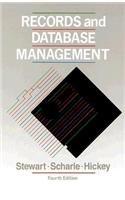Answered step by step
Verified Expert Solution
Question
1 Approved Answer
Lab07 functions.h here, using C++ thanks! #ifndef MATRIX_TYPE #define MATRIX_TYPE #include using std::string; #include using std::vector; /* very convenient. If you want to change the

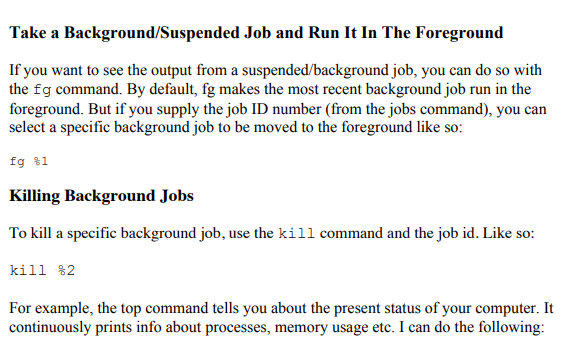
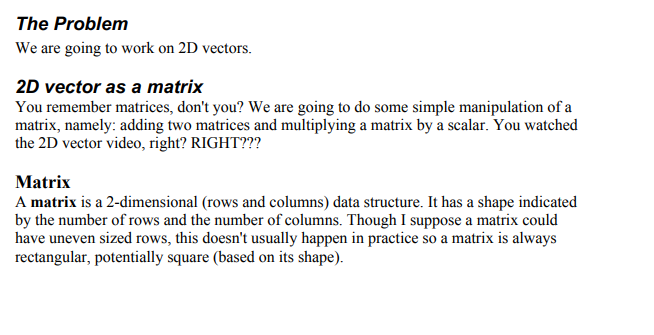
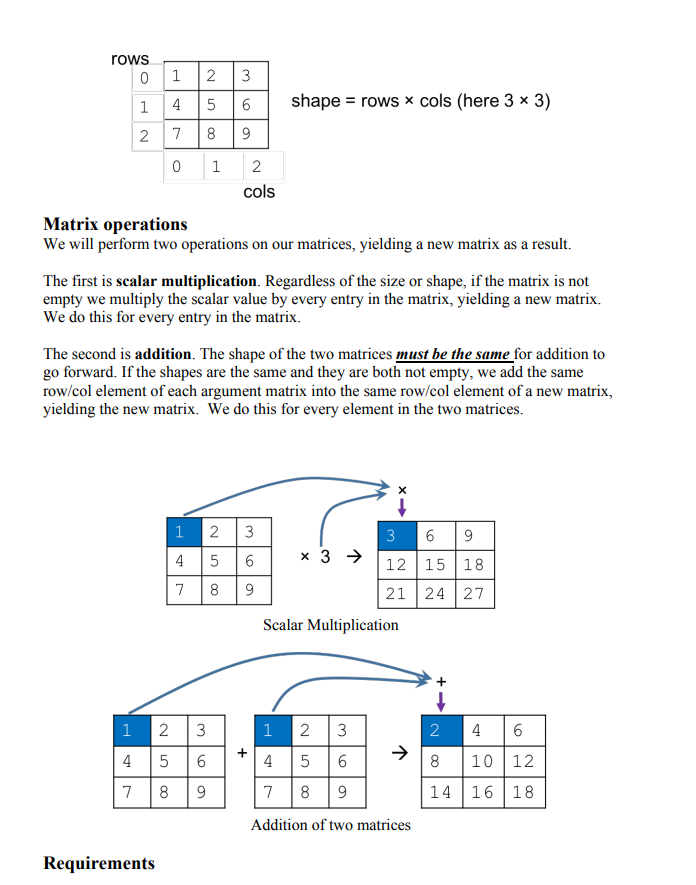

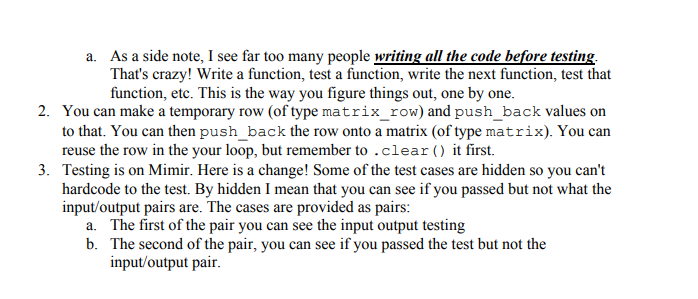
Lab07 functions.h here, using C++ thanks!
#ifndef MATRIX_TYPE #define MATRIX_TYPE #includeCommand Line Process Management (&, bg/fg) So far, we've been teaching you how to run programs at the command line. Running the program and waiting for it to finish works okay for short/fast programs, but if you have a program that takes minutes or hours to finish, you don't want to have to wait that long to do other things at the terminal. Instead, there is a way to run the program in the background, so that it is running but not blocking your access to the terminal Executing a Background Job Let us say we have a long-running program called a.out. Normally you would run the program like so ./a.out But if you did that your terminal would be blocked until it finished. No commands can be executed until it is done. If instead you add a ampersand (&) after the command, the execution is run in the background ./a.out& The job, a.out, will now run but the terminal is freed for your commands What jobs do I have? You can run the command jobs to see the status of your suspended (and running) jobs It reports it in the following way (I have a job called top running in background) jobs 1+ Stopped top The [1] is your local job number. We will use that in a minute Suspending a Running Job and Running in the Background Lets say you already were running a.out in the foreground (without the ampersand). You already know about CTRL-C to kill a running program. Here's a new one, CRTL-Z CNTRL-Z doesn't kill a program, but instead suspends it (pauses it), giving you back control of your terminal. Whatever was running is now stopped, but can be restarted. After suspending a job, you can have the suspended job run in background using the command bg Command Line Process Management (&, bg/fg) So far, we've been teaching you how to run programs at the command line. Running the program and waiting for it to finish works okay for short/fast programs, but if you have a program that takes minutes or hours to finish, you don't want to have to wait that long to do other things at the terminal. Instead, there is a way to run the program in the background, so that it is running but not blocking your access to the terminal Executing a Background Job Let us say we have a long-running program called a.out. Normally you would run the program like so ./a.out But if you did that your terminal would be blocked until it finished. No commands can be executed until it is done. If instead you add a ampersand (&) after the command, the execution is run in the background ./a.out& The job, a.out, will now run but the terminal is freed for your commands What jobs do I have? You can run the command jobs to see the status of your suspended (and running) jobs It reports it in the following way (I have a job called top running in background) jobs 1+ Stopped top The [1] is your local job number. We will use that in a minute Suspending a Running Job and Running in the Background Lets say you already were running a.out in the foreground (without the ampersand). You already know about CTRL-C to kill a running program. Here's a new one, CRTL-Z CNTRL-Z doesn't kill a program, but instead suspends it (pauses it), giving you back control of your terminal. Whatever was running is now stopped, but can be restarted. After suspending a job, you can have the suspended job run in background using the command bgusing std::string; #include using std::vector; /* very convenient. If you want to change the type stored in the matrix, you only have to change the single template type in matrix_row */ using matrix_row = vector ; using matrix = vector ; /* nicely print a matrix. Should have row/column alignment converts it to a string (doesn't print to cout!!!) uses width to space elements (setw). Default is 3 */ string matrix_to_str(const matrix &m1, size_t width=3); /* true if the two matrices have the same shape false otherwise */ bool same_size(matrix &m1, matrix &m2); /* matrices must not be empty and must be the same shape: - if true, return a new matrix that adds m1+m2 - if false, return an empty matrix (no elements) */ matrix add(matrix &m1, matrix &m2); /* matrix must not be empty: - if true, multiply T scalar value by m - if false, return empty matrix (no elements) */ matrix scalar_multiply(matrix &m, long val); #endif
Step by Step Solution
There are 3 Steps involved in it
Step: 1

Get Instant Access to Expert-Tailored Solutions
See step-by-step solutions with expert insights and AI powered tools for academic success
Step: 2

Step: 3

Ace Your Homework with AI
Get the answers you need in no time with our AI-driven, step-by-step assistance
Get Started


